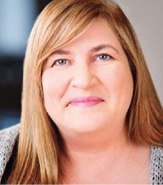August 2017 • Volume 105 • Number 8 • Page 26
Thank you for viewing this Illinois Bar Journal article. Please join the ISBA to access all of our IBJ articles and archives.
Marketing
Mapping Your Client’s Journey
What's the experience like at your law firm for the people who matter most - your clients? Isn't it time you asked them?

They say life is a journey, and the law is one, too.
But firms and attorneys don't always take the time and effort to map out that journey focusing on clients and their experiences with the firm, with the goal of ensuring that clients reach their destination as efficiently and effectively as possible.
"I've learned to ask a very simple question that drives this point home: How easy are you to do business with?" says Josh Kubicki, Cincinnati-based chief strategy officer at Seyfarth Shaw LLP. "You may be one hell of a lawyer, but you may be a pain-in-the-you-know-what to do business with, from billing, to reaching you, to communicating, to you using words clients understand. If you're able to make that easier for your clients, you'll be able to capture value."
Kubicki discussed client mapping as part of his presentation at the Illinois Supreme Court Commission on Professionalism's The Future Is Now: Legal Services 2.017 conference in Chicago in May (see http://bit.ly/2tfrOUv).
Start with the client
 The process of journey mapping isn't that difficult but requires an ongoing, step-by-step commitment, Kubicki says. First, an attorney or firm needs to take a step back and think about all the different touchpoints - people, processes, and tools - they use in delivering service, he says.
The process of journey mapping isn't that difficult but requires an ongoing, step-by-step commitment, Kubicki says. First, an attorney or firm needs to take a step back and think about all the different touchpoints - people, processes, and tools - they use in delivering service, he says.
"What are all the different things my customer or client interacts with - it could be phone, e-mail, a form you have them fill out, the courts, people in your office," Kubicki says. "You want to be as inclusive as possible - yes, my secretary, put her down [on the list]."
Secondly, pick a scenario to map out - it could involve a real client or a fictional one. Determine (or invent) how they found you and how they first contacted you, whether by phone or e-mail. "Start writing down, 'They interact with my secretary, I have them fill out this form,' all the way to, how do you make them happy - [for example,] settle the divorce," he says.
Once you put that list together, you can step back and say: "Where along that journey do I really [turn] the client off because I'm asking them to fill out the same form three times? Why are they skipping that question? Why do clients not come back to me - is it because our bills are confusing, because they can't get in touch with me, they can't understand what's happening to them in the legal realm? Where does the client not have a reaction, and what seems to get a positive response?"
 The first and most important part of the client journey mapping process should be gathering information from and about the client, says Yolanda Cartusciello, partner at Bernero & Press LLC, a New York-based business consulting firm for lawyers. "That can be in the form of client interviews, it can be in the form of narrative from the lawyers about working with the client, it can be third-party syndicated studies," she says. "But you have to begin with the client's perspective. If you don't, nothing else you do matters."
The first and most important part of the client journey mapping process should be gathering information from and about the client, says Yolanda Cartusciello, partner at Bernero & Press LLC, a New York-based business consulting firm for lawyers. "That can be in the form of client interviews, it can be in the form of narrative from the lawyers about working with the client, it can be third-party syndicated studies," she says. "But you have to begin with the client's perspective. If you don't, nothing else you do matters."
Second, Cartusciello says, gather a diverse group of people from the firm to work on the project - and not just attorneys. "For the best results, see if you can include a paralegal, somebody from the accounting department or IT department, even an administrative assistant," she says. "By bringing other people's perspective, you may very well come up with a better potential solution to whatever issues you uncover. For the clients, obviously the most important thing they get is legal advice. But part of the experience is the person who answers the phone, or who sends them the bill."
Third, the firm or attorney needs to decide whether they are trying to map the journey of one client, or a whole group of them - the latter is generally richer and more beneficial, Cartusciello says, but it does require putting together an aggregate persona that's a stand-in description of the typical client with typical services. "It's really important to think about the client as an individual rather than a company because you need to personalize this," she says.
Then, map out the stages of the experience as Kubicki describes, showing what happens and thinking about what clients expect to happen and when their expectations are disappointed. "You find the moments of truth - the difference between what's expected and what the client experiences," Cartusciello says. "They should also look at where the firm met or exceeded the client's expectations."
The firm or attorney can score themselves as they go, even simply by using smiley or frowny faces, making best guesses about how easy they are to do business with, keeping in mind that it's not a perfectly scientific process, Kubicki says. Then, he suggests walking through the process with a client, or a former client, or just a friend who's willing to role-play if you're having a knee-jerk nervous reaction about using an actual client, he says.
"What touch point is the most irritating to my client?" Kubicki says. "Maybe you learn that there's a touch point that makes them uncomfortable. Ask, 'How could I make it better? Could I erase it? Is it pertinent to my service delivery?' What you find is that lots of things just become habitual. It might have been relevant 10 or 20 years ago. You stumble upon these relics of your business model that aren't relevant anymore."
A frequent irritation is communication - either lack thereof, or too much, about too many details. "My individual clients don't want to pay for a legal education - they don't want me to bill them to explain what's happening to them," he says. "One law firm I worked with created a template where it explained what's happening from a legal perspective in very plain English. This became a very consumer-friendly note. It was basically a dummy's guide to their case."
Cartusciello cautions that firms and attorneys cannot do client journey mapping as a one-off exercise. "This might sound like the latest fad," she says. "But at the end of the day, it's about providing consistently excellent experiences for the clients, so that the clients both remember and come back, and stay working with the firm, as well as promote the firm and recommend the firm to others."
Pitfalls in the mapping process
As attorneys and firms move forward with the client journey mapping process, the most frequent mistake they make is taking things for granted and not getting granular enough, Kubicki says. "When I work with attorneys on doing this stuff, they tend to think, 'Well, why do I have to think about the phone call?'" he says. "The things that the lawyer is overlooking tend to be areas where there's room for improvement because that's where those habits are so entrenched."
But that's also what seems the most dry and laborious, Kubicki says. "Oh my God, why are we doing this again?" he says, describing that mentality. "You've got to be committed. This isn't the sexy, fun part. The fun, sexy part is when you start tweaking the journey map: We've made our clients more happy, and us easier to do business with."
Another pitfall that befalls firms and attorneys when client journey mapping is the tendency to overlook hard realities about resources and culture, Kubicki says. "It'd be great to map an ideal journey where everyone is dancing and slapping each other on the back," he says. "Changing a form is easier - changing someone's behavior is one of the hardest things to do.… People just constantly downplay the challenge in changing human behavior. They want to say, 'Here's the ideal state, let's deliver it.'"
Cartusciello says firms sometimes get too ambitious at the outset. "It's what I call the 'boiling the ocean' instinct that some firms have," she says. "They want to do this with all their clients at one time. You need to start small, with a pilot. Otherwise, it won't get done."
In mapping out the client journey, some firms get too granular, Cartusciello says. "When I talk to people about stages, some get so detailed and come up with so many stages that it makes the exercise impossible," she says. "You need to limit it. If you've got more than eight or 10 stages, you've made this nearly impossible. You might get through it once but then never do it again."
Third, she says, some firms and attorneys do not ask the client enough questions at the outset. "They make the mistake of thinking they know what the client is thinking and feeling," she says. "In some form or another, you've got to get input." And some go through the exercise and then think they're done. "It's a continuous process," she adds. "The world changes so quickly, you can't rely on the exercise you did last year and the year before. You need to look at this regularly."
The payoff
So why go through all this trouble and hard work? Firstly, Kubicki says, you enjoy a better working environment with clients, who better understand what you're doing for them, and how and why. "You have clients who are not complaining that you make it so hard for them," he says. "They don't necessarily complain to the lawyers, but they don't look forward to this [legal] process. They're not in the best mood. That makes it difficult for lawyers to advocate for them, and for the client to help the lawyer help them. You get closer to your client on a human level."
That closer relationship can lead to word-of-mouth referrals for small-firm lawyers and more lasting business relationships for larger, corporate firms, Kubicki says. "It's keeping that client longer, it's getting more work from that client, it's increasing the value that you're giving to that client," he says. "I've also seen, internally, the cost of operations being lowered."
One 30-person firm with which Kubicki worked was able to reduce its headcount by two or three staff positions after completing its client journey mapping. "We were able to consolidate and, through a combination of better processes [and] removing those relics [from the process], save on headcount," he says. "It wasn't good for those people…but it lowered, from the firm's perspective, their cost basis. They were more profitable. That was a huge outcome for them."
Cartusciello has seen a variety of different successes for firms and attorneys in undertaking client journey mapping. One firm with which she worked realized they had been preparing for pitches and potential client meetings incorrectly, for example. "They weren't thinking through the matter as thoroughly as they could have," she says. "We used this as an exercise to more effectively talk about the life of the matter, and price more accurately."
Another firm undertook journey mapping for several clients in a particular practice area and recognized an issue that they hadn't realized was there before because several clients brought up the same point about the same stage in the journey, Cartusciello says. "It wasn't a hard fix, it just had never occurred to them," she says.
And the last successes she mentions are the closer ties to clients and resulting increased revenues. "In general, there is evidence to suggest that when you do this, your revenues increase and your rate of retention and referrals from your clients increases - significantly enough that this has to be the reason," Cartusciello says.
Ultimately, the process of designing a customer journey map should result in firms and attorneys finding value, Kubicki says. "You discover together how to break the work up and maybe price it differently," he says. "You learn how to set strategy for different types of cases -these characteristics fall into this bucket - and you talk about how to get the work done and manage the client experience."
The cost of doing nothing
So what's lost by continuing with business as usual? Kubicki has a few thoughts: "One, you look and smell and act like everybody else," he says. "If that's an image you're OK with, God bless you. If you want to be part of the sea of sameness, that's great if it works out for you."
But client journey mapping is worth considering if you want to enjoy your work more, and you want happier customers and clients, Kubicki says. "Doing this stacks the odds in your favor," he says. "It adds more fluidity to your daily life. And it just makes things easier."
The main thing that attorneys and firms are missing if they don't map out the client journey is the awareness of how they can better service clients, Kubicki says. "It is a lens that's relatively easy to put on, if you're willing to go through the exercise," he says. "That lens gives you the ability to apply good business hygiene to your law firm. It's a way to scrub through your firm and make sure you're running the way you want."
"There are lots of law firms out there with people who can do the legal work your clients are seeking to have done," Cartusciello concludes. "Without journey mapping, you're missing the extra dimension that ties clients to those law firms."

Ed Finkel is an Evanston-based freelance writer.
edfinkel@earthlink.net

